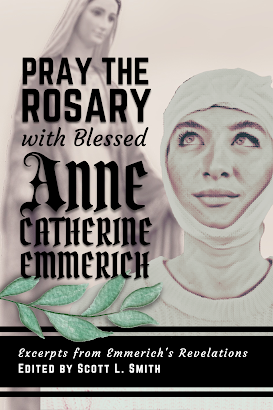How does the White Tree of Gondor connect to all this? And Isildur? Remember, there were Two Trees in the Garden of Eden, as well as in J. R. R. Tolkien’s Eden: that troublesome Tree of Knowledge of Good & Evil and the other one, the Tree of Life.
This series of posts has taken us from the Lembas Bread and the Eucharist to its Manna-like origins and then to the Garden of Eden. Why were Adam & Eve banished from Eden? But first, still more on the mysterious Telperion tree.
Read more on The Lord of the Rings and the Eucharist! These articles form part of a larger work I have written entitled Lord of the Rings and the Eucharist, available in paperback and ebook versions:

Also, Telperion’s dew was silvery and was collected as a source of water and of light. It was revered and collected by the Varda. This may also be a reference to the manna. See, for example, Exodus 16:13-14:
The manna formed on the ground like dew. Does that sound familiar? The bread came down "like the dewfall". These words are uttered by the priest at the epiclesis of the Catholic Mass, at the consecration of the bread. This is when the work of the Holy Spirit changes the bread into the flesh of Christ.
At Genesis 3:22, we are told the reason that Adam and Eve have been banished from the Garden of Eden: “lest [man] put forth his hand and take also of the Tree of Life, and eat, and live forever.” Adam and Eve were banished from Eden, lest they eat freely of the Tree of Life. “At the east of the garden of Eden,” Genesis also states, God “placed the cherubim, and a flaming sword which turned every way, to guard the way to the Tree of Life.”
The Book of Revelation, which is in many ways the direct sequel to Genesis, references the Tree of Life in several places. See, for example, Revelation 2:7:
At the end of time, men will again eat from the Tree of Life. This, they will do in Paradise and, thus, receive immortality. Again, at Genesis 22:1-2, it is written:
In summary, man was forbidden to eat of the Tree of Life and was banished from Eden to ensure this. Now, in Heaven, man is again allowed to eat of the Tree of Life. What is this Tree of Life that we are to eat of in Heaven? Or Who?
The Tree of Life is Christ. It is the Eucharist. This is why the lembas is wrapped in the silver leaves of Telperion and adorned with its flower: the lembas is a symbol for the Eucharist and is wrapped in the leaves and flowers of Tolkien’s Tree of Life.
Yavanna and Nienna again sang and wept. However, they succeeded only in resurrecting Telperion's last flower and Laurelin's last fruit. Telperion’s flower became the Sun and Laurelin’s fruit became the Moon. Ungoliant had nevertheless succeeded in poisoning the light of the Two Trees.
Similarly, following Satan’s poisonous lies, not only did Adam and Eve fall, but the whole of nature fell with them. From then on, the true light of the Two Trees was said only to abide in the Silmarils, the legendary jewels forged by the Elves.
Because of the Elves great love of Telperion, Yavanna made a second tree like unto it. This tree stood in the city of Tirion. In this city, two of the clans of the Eldar, the Vanyar and the Ñoldor, dwelt together. These two clans, however, would soon become estranged, not unlike Cain and Abel and later the clans of Cain and Seth.
The tree of Tirion was named Galathilion. It was identical to Telperion except that it bore no light of its own. A seedling of Galathilion was planted on the island of Tol Eressëa. This tree was named Celeborn.
Later, in the Second Age, a seedling of Celeborn was planted on the island of the Númenoreans. The Númenoreans were also called the Men of Westernesse, because their island lay west across the sea. They would also become known as the Dúnedain, of which Aragorn was among the last survivors.
The seedling of Celeborn became Nimloth, the White Tree of Númenor. Nimloth, as we will later see, is Tolkien’s symbol, not just for the Kingdom of Númenor, but for the Kingdom of Israel, as well.
Nimloth survived through most of the reign of the Númenoreans. That is, until the rise of Sauron. Sauron took control of Númenor and made King Ar-Pharazôn chop down Nimloth. The wood of the tree was then burnt on the altars.
Despite Sauron’s despoiling of the tree, Isildur managed to save a single fruit of Nimloth. He suffered many wounds in his mission to rescue the tree and came near to death. When the first leaf opened in the spring, however, Isildur was miraculously healed of his wounds. From the rescued fruit later came … the White Tree of Gondor.
At last! We arrive at the White Tree of Gondor.
What happened to White Tree of Gondor and King Isildur? How were their fates inextricably linked, and how does this mirror the History of the Kingdom of Israel? For the answer to this, check out the next post.
For more quality Sci-Fi and Fantasy nerdiness, you can check out my articles at Nerdatron.com.
Please comment and share! Sharing is caring.
This series of posts has taken us from the Lembas Bread and the Eucharist to its Manna-like origins and then to the Garden of Eden. Why were Adam & Eve banished from Eden? But first, still more on the mysterious Telperion tree.
Read more on The Lord of the Rings and the Eucharist! These articles form part of a larger work I have written entitled Lord of the Rings and the Eucharist, available in paperback and ebook versions:

Silver Leaves, Wafers, and Dew
Each tree was a source of its own sort light: Telperion's light was silver and Laurelin's was gold. Telperion had dark leaves, which were silver on one side. Telperion’s leaves were used to wrap the lembas bread of the Eldar: "leaves of silver [...] a wafer of white wax shaped as a single flower of Telperion."Also, Telperion’s dew was silvery and was collected as a source of water and of light. It was revered and collected by the Varda. This may also be a reference to the manna. See, for example, Exodus 16:13-14:
In the evening quails came up and covered the camp; and in the morning dew lay round about the camp. And when the dew had gone up, there was on the face of the wilderness a fine, flake-like thing, fine as hoarfrost on the ground.
The manna formed on the ground like dew. Does that sound familiar? The bread came down "like the dewfall". These words are uttered by the priest at the epiclesis of the Catholic Mass, at the consecration of the bread. This is when the work of the Holy Spirit changes the bread into the flesh of Christ.
Telperion, the Male Tree, & the Tree of Life
It is perhaps most interesting that Telperion is the male of the pair of trees. This may be the most interesting connection of all. Not only is the male-female complementarity significant in Scripture, of the Two Trees of Eden, one is also depicted as male.At Genesis 3:22, we are told the reason that Adam and Eve have been banished from the Garden of Eden: “lest [man] put forth his hand and take also of the Tree of Life, and eat, and live forever.” Adam and Eve were banished from Eden, lest they eat freely of the Tree of Life. “At the east of the garden of Eden,” Genesis also states, God “placed the cherubim, and a flaming sword which turned every way, to guard the way to the Tree of Life.”
The Book of Revelation, which is in many ways the direct sequel to Genesis, references the Tree of Life in several places. See, for example, Revelation 2:7:
To him who conquers I will grant to eat of the Tree of Life, which is in the paradise of God.
At the end of time, men will again eat from the Tree of Life. This, they will do in Paradise and, thus, receive immortality. Again, at Genesis 22:1-2, it is written:
Then he showed me the river of the water of life, bright as crystal, flowing from the throne of God and of the Lamb through the middle of the street of the city; also, on either side of the river, the Tree of Life with its twelve kinds of fruit, yielding its fruit each month; and the leaves of the tree were for the healing of the nations.
In summary, man was forbidden to eat of the Tree of Life and was banished from Eden to ensure this. Now, in Heaven, man is again allowed to eat of the Tree of Life. What is this Tree of Life that we are to eat of in Heaven? Or Who?
The Tree of Life is Christ. It is the Eucharist. This is why the lembas is wrapped in the silver leaves of Telperion and adorned with its flower: the lembas is a symbol for the Eucharist and is wrapped in the leaves and flowers of Tolkien’s Tree of Life.
The Fate of the Two Trees
As stated above, Melkor was not finished wreaking destruction after he had destroyed the Two Lamps with Ungoliant’s help. Melkor became jealous of the beauty of the Two Trees and Ungoliant hungered after their great light. Again, Melkor enlisted the help of the giant spider. Melkor struck the trees down, and the spider drank of the trees’ light and life.Yavanna and Nienna again sang and wept. However, they succeeded only in resurrecting Telperion's last flower and Laurelin's last fruit. Telperion’s flower became the Sun and Laurelin’s fruit became the Moon. Ungoliant had nevertheless succeeded in poisoning the light of the Two Trees.
Similarly, following Satan’s poisonous lies, not only did Adam and Eve fall, but the whole of nature fell with them. From then on, the true light of the Two Trees was said only to abide in the Silmarils, the legendary jewels forged by the Elves.
Because of the Elves great love of Telperion, Yavanna made a second tree like unto it. This tree stood in the city of Tirion. In this city, two of the clans of the Eldar, the Vanyar and the Ñoldor, dwelt together. These two clans, however, would soon become estranged, not unlike Cain and Abel and later the clans of Cain and Seth.
The tree of Tirion was named Galathilion. It was identical to Telperion except that it bore no light of its own. A seedling of Galathilion was planted on the island of Tol Eressëa. This tree was named Celeborn.
Later, in the Second Age, a seedling of Celeborn was planted on the island of the Númenoreans. The Númenoreans were also called the Men of Westernesse, because their island lay west across the sea. They would also become known as the Dúnedain, of which Aragorn was among the last survivors.
The seedling of Celeborn became Nimloth, the White Tree of Númenor. Nimloth, as we will later see, is Tolkien’s symbol, not just for the Kingdom of Númenor, but for the Kingdom of Israel, as well.
Nimloth survived through most of the reign of the Númenoreans. That is, until the rise of Sauron. Sauron took control of Númenor and made King Ar-Pharazôn chop down Nimloth. The wood of the tree was then burnt on the altars.
Despite Sauron’s despoiling of the tree, Isildur managed to save a single fruit of Nimloth. He suffered many wounds in his mission to rescue the tree and came near to death. When the first leaf opened in the spring, however, Isildur was miraculously healed of his wounds. From the rescued fruit later came … the White Tree of Gondor.
At last! We arrive at the White Tree of Gondor.
What happened to White Tree of Gondor and King Isildur? How were their fates inextricably linked, and how does this mirror the History of the Kingdom of Israel? For the answer to this, check out the next post.
For more quality Sci-Fi and Fantasy nerdiness, you can check out my articles at Nerdatron.com.
Please comment and share! Sharing is caring.














0 Comments